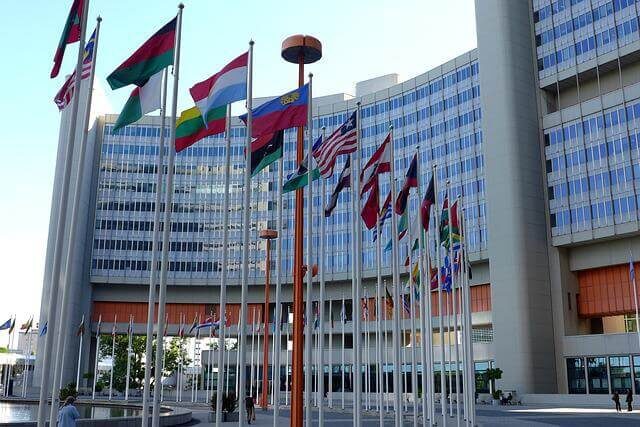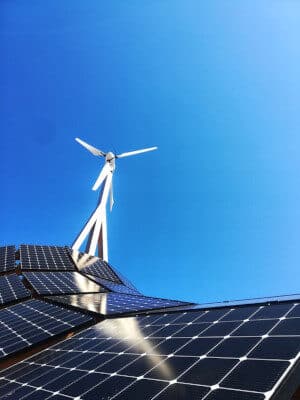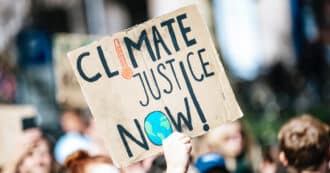By Harry Cooper – The world has been emitting greenhouse gases at a steadily growing rate since the industrial revolution. These industrial processes that our world has come to rely on economically, socially, and technologically have been warming our planet and destroying our environment.
But many people have noticed the devastation caused by global warming and have taken up action to create a world with net zero emissions. This action has gained global traction and has called upon the leaders of the world to not just act on behalf of our climate, but make broad systemic changes to our global systems.
Working Towards a Greener World
The issue with our current global system is that the global economy and society is heavily reliant on the use of fossil fuels. In order to make some serious changes to the way we treat the planet, we need to under go a process of decarbonization, or making our world less centered around carbon emitting technology.
Decarbonization is going to require a massive overhaul of our current technology, and replacing it with cleaner, more efficient technology. Since decarbonization requires lots of large changes to our current system, it will also require a lot of planning and organization to make such changes.
Decarbonization Planning and Policy
Because greenhouse gas emissions have become such an issue, many international organizations have started working towards creating some kind of standard or plan for dealing with climate change. These organizations are made up of scientists, activists, and political leaders, all hoping to work towards solving climate.
IPCC
Intergovernmental Panel on Climate Change, or IPCC, is an organization affiliated with the United Nations meant to provide information on climate change to the UN and the governments of the world, in order to better inform climate policy. One of the most notable things they do is creating the IPCC emissions scenarios. These scenarios are studies done to try and predict what the Earth’s climate will look like at the end of the century depending on how much our carbon dioxide emissions change.
Climate Change Scenarios
These scenarios range from being incredibly optimistic about our ability to institute carbon dioxide emissions reductions, to assuming we will go about our business as usual, to playing out what would happen if we increased greenhouse gas emissions. While unfortunately all of the scenarios predict that we will have a warmer climate by the end of the century, there is a big difference in how bad off we will be among the reports.
The most optimistic projection, RCP 2.6, expects an immediate steady reduction of greenhouse gas emissions with a 0.3-1.7°C increase in global temperatures. On the other hand, the most pessimistic projection we are expected to see is a rapid increase in greenhouse gas emissions, and a warming of 2.6-4.8°C by the end of the century.
The Paris Agreement
The United Nations has taken the research the IPCC has done and put it into policy. The most notable policy that they have passed in response to climate change is the Paris Agreement.
The Paris Agreement is an agreement among the countries of the United Nations to curb global warming to be no more than two degrees above their pre industrial revolution levels. This requires countries to slash their greenhouse gas emissions if they want to meet this goal. Reducing global emissions by such a large amount will require a lot of big changes in the way we do things, but with proper development and technological implementation, we can work towards decarbonizing our world.
Renewable Energy for Decarbonization
One of the most important things we can do for the process of decarbonization is to start moving away from fossil fuels as a source of energy. Scientists have already found and developed many different forms of alternative energies that are not only cleaner but are cheaper and have greater energy efficiency.
Solar Power
Solar power works by installing solar panels in solar farms or on individual buildings. These panels absorb the energy that come from the suns rays and turn it into usable electricity. This way of electricity generation is incredibly clean, in fact it emits no greenhouse gases whatsoever. Not only that, but since the sun will always be shining until it dies out, we will never run out of solar energy, making it a perfect renewable resource.
Solar energy is also incredibly viable economically. Solar is the fastest growing energy source in the US and also the cheapest. This is because solar panels require a one time installation and little maintenance over their long lifetime.
Wind Power
Another good example of alternatives to fossil fuels is wind power. Wind power works by using the wind to turn fans that power large turbines to create electricity. Much like solar power, wind power emits no greenhouse gases whatsoever, and since the wind will always be blowing somewhere, it is a perpetual source of energy.
Also like solar power, wind is an economically efficient source of fuel. Not only is wind energy cheaper than fossil fuels, but investments into the US wind sector account for around ten billion dollars annually invested into the economy. Along with this, it is also estimated that the wind power sector has already created over one hundred thousand jobs in the US.
Decarbonization Through Electricity Powered Technology
In addition to making more electricity from renewable sources, we also have to make sure that our society is ready to be powered by electricity. A lot of our technology and infrastructure is currently powered by directly burning fossil fuels. If we want to start decarbonizing our way of life we will need to implement more electric powered technology.
Electric Vehicles
It is estimated that 29% of US carbon emissions come from cars and the transportation sector, making it the largest contributor of emissions in the US. Making cars greener is one of the most popular topics in environmentalism today, and electric vehicles are at the forefront of the discussion.
Electric cars are vehicles capable of running completely on electricity. Technological innovation in the electric vehicle market has made electric cars incredibly energy efficient. Along with this electric cars emit no carbon emissions unlike traditional cars that constantly spew them from their tailpipe. Electric vehicles have the capacity to have little to no carbon footprint, and cut emissions from the transportation sector by massive amounts.
Fossil Fuel Powered Furnaces
There are many homes that are heated and powered by furnaces that release greenhouse gas emissions. Powering our homes and businesses with unclean fuels has a considerable carbon footprint, but luckily there is another option.
Electric furnaces are capable of heating and cooling homes with only electricity. If a building is running on energy generated from a renewable source then electric heating has the capability to keep buildings hot and cold without creating any carbon emissions.
Energy Efficiency
Decarbonization will require a drastic shift away from fossil fuels and technology that relies on fossil fuels. While building infrastructure to facilitate a renewable based energy system is incredibly important, it is also important to use technology that uses less energy in general, in order to make a more sustainable world. The aim is to reach net zero emissions.
Green Architecture
Green architecture is not limited to one thing in particular, it is simply a type of design that takes the environment into consideration. By designing buildings with sustainability in mind, homes and businesses would require a lot less energy to operate efficiently.
Green Roofs
There are many different types of green architecture techniques, but one of the most notable is the use of green roofs. Green roofs are a types of architecture that uses plants as roofing.
Not only do these green roofs take carbon out of the atmosphere, but they naturally cool down the air around them and regulate temperatures. This type of natural temperature regulation reduces the amount of energy needed to heat and cool homes.
Solar Shingles
Another type of green architecture is solar shingles. While widespread use of solar energy would come from massive solar farms, putting solar panels on individual houses can also make an impact on how much energy we use.
Solar shingles are a specific kind of residential solar panel that make up the roof itself, rather than just sitting on top of it. When individual buildings are able to make some of their own energy, it takes demand and stress off of larger scale energy production and makes buildings more energy efficient.
Taking Carbon Out of the Atmosphere
Decarbonization is not just about making a world that produces less carbon, it is also about removing carbon from the atmosphere. There have been advances in carbon capture technologies designed to filter carbon dioxide out of the air to quite literally decarbonize the Earth. However, the best way to remove carbon emissions from the atmosphere may not be a human invention at all.
Planting Trees
Reforestation efforts around the world are planting trees in hopes of restoring biodiversity, recreating natural spaces, and of course decarbonization. When trees photosynthesize, they not only release oxygen but take in carbon dioxide. This means that trees have the capacity to store billions of tons of carbon emissions.
It is estimated that we could increase the world’s forest cover by one third without encroaching on current cities and agriculture. By planting this many trees we could expect the amount of carbon in Earth’s atmosphere to decrease by 25%. This would undo almost a hundred years worth of carbon emissions. Thus while the Earth begins to use modern technology to move towards a decarbonized world, one of the best things we can do to curb climate change is leave it to the trees.
Religion and Decarbonization
National Catholic Reporter’s “Earth Beat” recently published an article about how Interfaith groups are outlining moral standards for climate finance. A variety of religious groups have come together to press “the financial industry to adopt a set of moral standards to address climate change that would steer assets away from fossil fuels and deforestation and make portfolios excluding both the default option for clients… The standards also call for avoiding new investments in heavy-emitting companies that lack short- and medium-term decarbonization and deforestation plans, and to divest within three years from companies that don’t develop such plans.” Religious groups using their financial capital and moral authority to shift our economy away from fossil fuels and deforestation and towards decarbonization and and reforestation is an exciting development. We can make a difference, and when we come together, we can change the world.
* Featured image source








